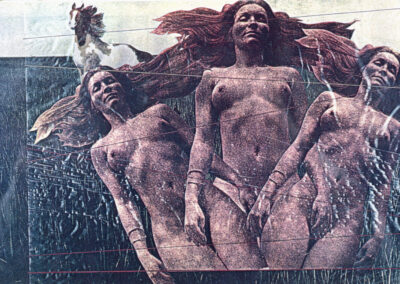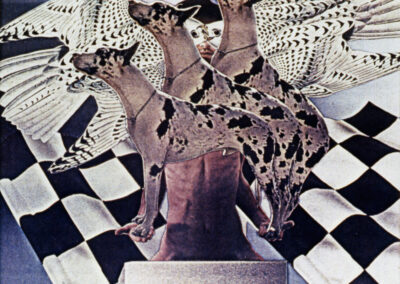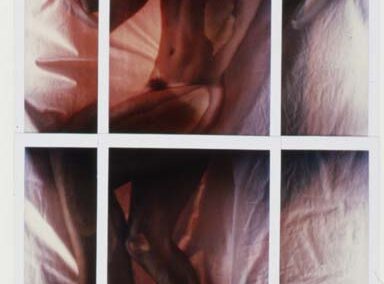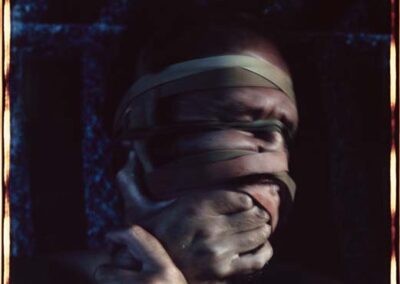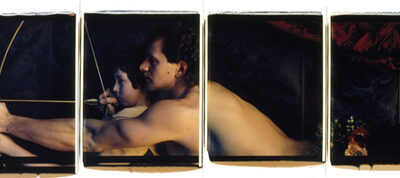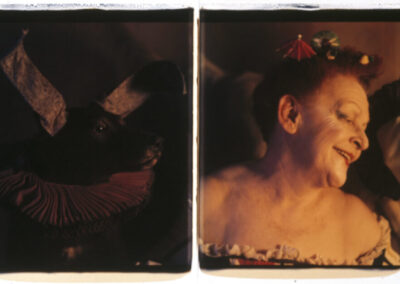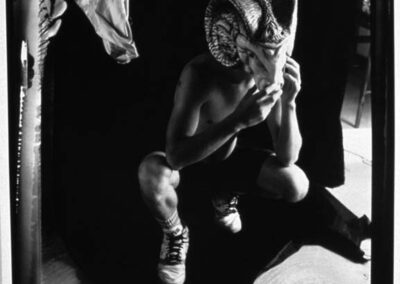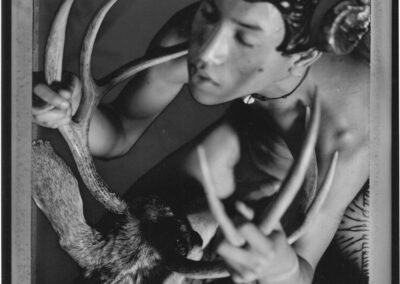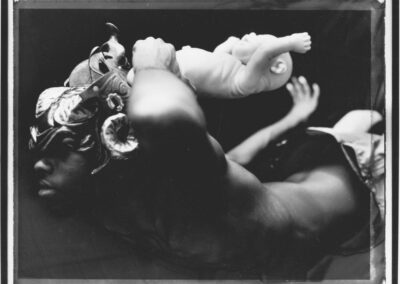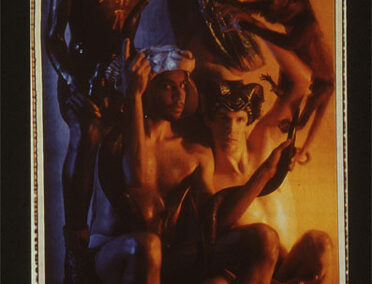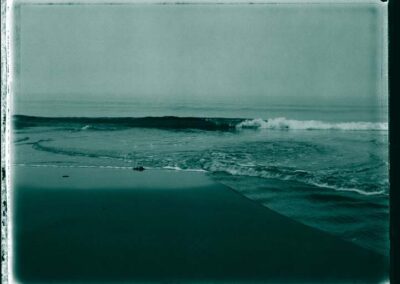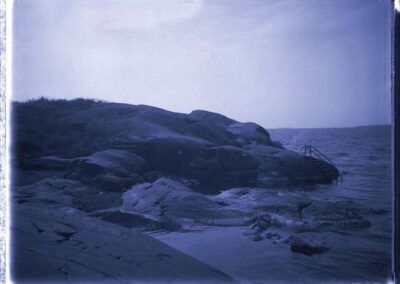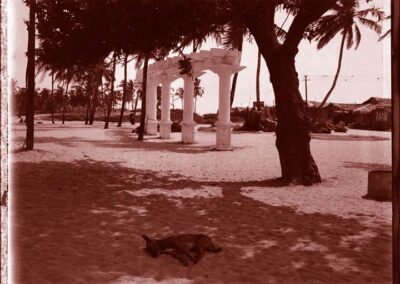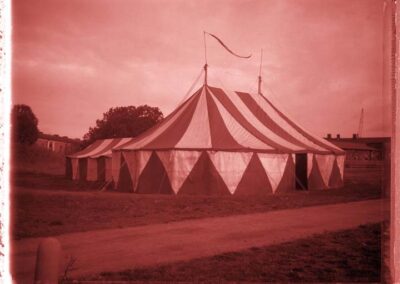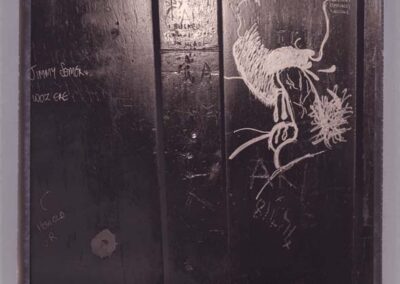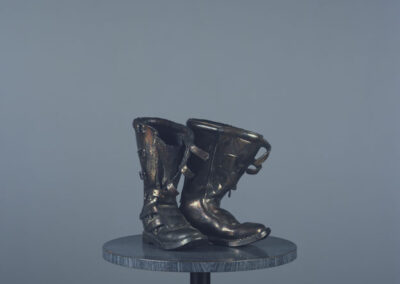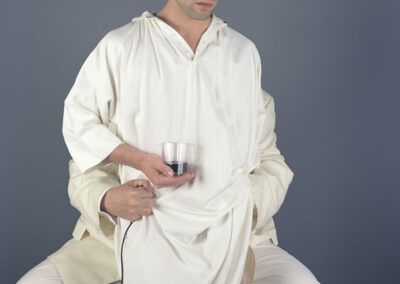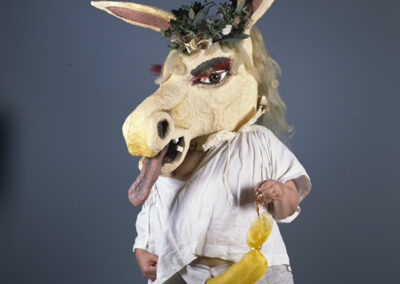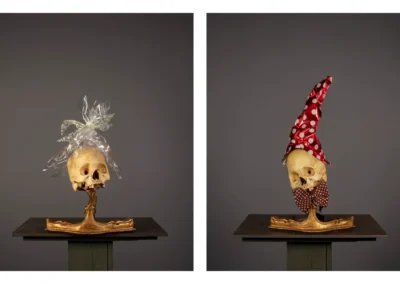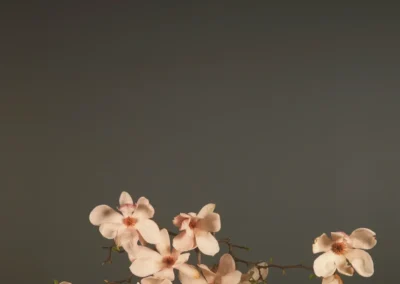Our next Artist You Need To Know is Evergon. A Canadian artist, teacher and activist, he has also created bodies of work using the alter-egos Celluloso Evergoni, Egon Brut, and Eve R. Gonzales. Born in Niagara Falls, ON, Canada, Evergon went to Mount Allison University (Sackville, New Brunswick) and later graduated from the Rochester Institute of Technology (New York) in 1974, with an MFA. He has worked in a variety of lens based media and related processes, including photo-collage, instant photography (discontinued Polaroid), colour photocopying, and holography.
Major themes in his work include personal sexuality, gender construction, aging, and body image. His artwork frequently includes art historical references as well as questioning accepted interpretations of certain canonical art. Gay male culture has been a continuing thread through his work, though not exclusively so. Paired with that sense of art history, Evergon has also experimented and explored the technology of photography: some of his early photographs were in non silver processes and electrostatic works, and he is well known for his instant imaging photographs that culminated with one meter x two meter colour Polaroid prints.
The Canadian Museum of Contemporary Photography in 1988 organized a massive retrospective of his work, Evergon: 1971-1987: originally mounted at the National Gallery of Canada, the exhibition toured nationally and internationally to many venues. In 1996, in tandem with his five – month residency at the Bradford Photography Fellowship in the United Kingdom, Evergon had another major solo retrospective at the UK – based National Museum of Photography, Film & Television, which was accompanied by the publication Evergon 1987-1997.
Starting in the 1990s, Evergon produced two primary bodies of work from press cameras. The first was a fabricated document of Ramboys: a Bookless Novel finalized as large silver gelatin prints, creating a ‘contemporary mythology’ that continued his work in referencing and restructuring art historical tropes. This is some of the work for which Evergon is best known, and we’ve included a sampling of that below.
The other series might be described as a cross between landscape and a performative lens: titled Manscapes, these were scenes of male-to-male cruising grounds completed in various modes of digital imaging. In the last ten years, Evergon’s works include larger-than-life nudes of his Mother, Margaret & I, and a selection of images gleaned from his lifetime trove of memorabilia accompanied with self-portraits, Chez Moi: Domestic Content. (from Oeno Gallery)
Besides the previously mentioned shows, exhibitions of Evergon’s artwork have also taken place at Trois Points Gallery (Montréal); Il Ponte, Rome, (Italy); Australian Center for Photography, Sydney, (Australia); Bienal Internacional de Fotografía, Fotonoviembre Tenerife, (Spain) and many other venues in North America and Europe.
His work is included in many public collections, including the National Gallery of Canada; the Canada Council Art Bank; the Edmonton Art Gallery (Edmonton, AB); the Agnes Etherington Art Centre (Kingston, ON); Musée d’art contemporain de Montréal (Montréal, QC); the Art Institute of Chicago (Chicago, IL); the International Center of Photography (NY); George Eastman House (Rochester, NY); the Polaroid International Collection (Frankfurt, Germany); Musée de l’Élysée (Lausanne, Switzerland) and many others.
A more complete list of exhibitions and collections – as well as publications Evergon has produced and collaborated upon – can be found here.
In 1987, Evergon was the recipient of the Canada Council’s Victor Martyn Lynch-Staunton Award for his work with large format photography and in 1990 he received the Petro-Canada’s Art and Technology Award for his work in holography.
His significant history as an educator is another way in which he has influenced a generation of artists. Evergon has taught at the University of Ottawa; Emily Carr School of Art (Vancouver, BC); Brock University (St. Catharines, ON); the Ontario College of Art (Toronto, ON); School of the Art Institute of Chicago (Chicago, IL); and at Bradford College and the National Museum of Photography, Film and Television (West Yorkshire, England). He retired from formal teaching in 2015 (becoming professor emeritus) after being Associate Professor of Photography at Concordia University in Montréal, Quebec for 16 years.
Evergon has often been described as a formidable force, in the overlapping artistic spheres of artmaking, teaching and activism: so it’s unsurprising that even though he retired from Concordia in 2015, Evergon has been working in tandem with Jean-Jacques Ringuette, as part of the duo Chromogenic Curmudgeons. Upcoming in 2023 Musée national des beaux-arts du Québec will be mounting Evergon: a retrospective with the working title of Lovers and Muses.
Art historian Bruce Russell offers the following about Evergon’s life and art: “Popular without being populist, his work continually explores contemporary social issues within the discourse of a profoundly subjective imagination.” (from here)
Evergon’s site can be found here, and many of his bodies of work are represented there, that we’ve offered just samples from here.


